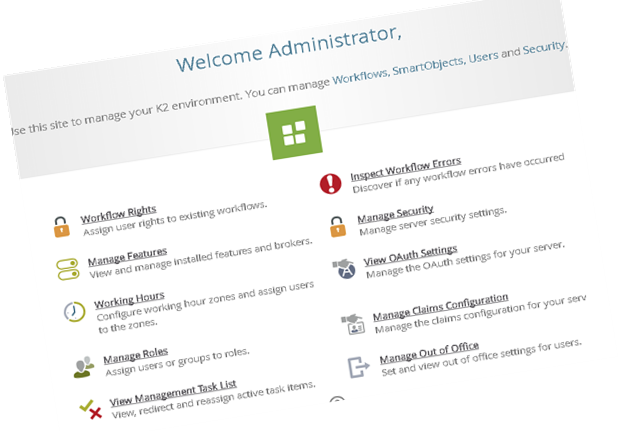
K2 Five next generation BPM framework is here! The release candidate is available now. The RTM version is expected in a few weeks.
K2 Five uses proven K2 blackpearl BPM paradigms and much of the familiar K2 blackpearl API along with much friendlier tooling, making it a whole lot more fun to use. In short, we’ll all be able to get more done in less time with K2 Five. K2 Five is available in the Cloud as well as on premise. Without a doubt, the licensing/subscription options will appeal to a wider range of customers. It’s all very exciting!
Along with excitement some questions arise. We all want K2 Five, and yet we need to know:
- Can we run and maintain legacy K2 applications along-side K2 Five applications?
- How can we deploy existing K2 v4.7 solutions to K2 Five?
Run and maintain legacy K2 applications alongside K2 Five applications
K2 five includes the tooling options shown below.

Legacy forms and SmartObjects are seemingly the same as K2 Five forms and SmartObjects. You can maintain both using V5 HML5 Workflow Designer. K2 Five workflows and legacy workflows however, are different. Although they both run on the K2 Five server, and they can both add tasks on the the same task list, they must each be maintained using different tooling, as shown above. Keep in mind that the cool new K2 Five workflow features that we all want to learn and use can only be added to K2 Five workflows, not to legacy workflows running on the K2 Five server.
How to deploy existing K2 v4.7 solutions to K2 Five
While there may be other ways of deploying K2 v4.7 solutions to K2 Five, the way that is supported by K2 is to upgrade your K2 4.7 server to K2 Five. Resident K2 4.7 solutions will then function correctly on the K2 Five server.
So here is a summary of what we found:
- Legacy K2 v4.7 solutions are automatically upgraded to run on K2 Five when the K2 v4.7 server is upgraded.
- Forms and SmartObjects deployed from K2 v4.7 to K2 Five can be maintained using the improved K2 Five tooling, seemingly just as if they had been created in K2 Five.
- Legacy workflow processes must be maintained using K2 for Visual Studio and the new workflow functionality that sets K2 Five apart and makes us all want to upgrade is not available in the legacy workflows.
- We can add an IPC event to a legacy workflow and use it to start a K2 Five workflow.
We all have a lot to learn on our journey to understand and implement K2 Five. We hope this article will help you along that journey.





Be the first to comment